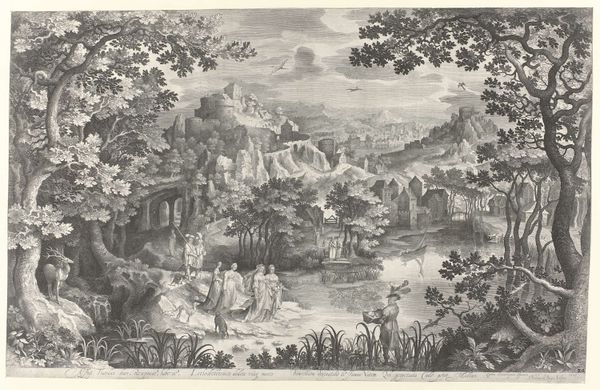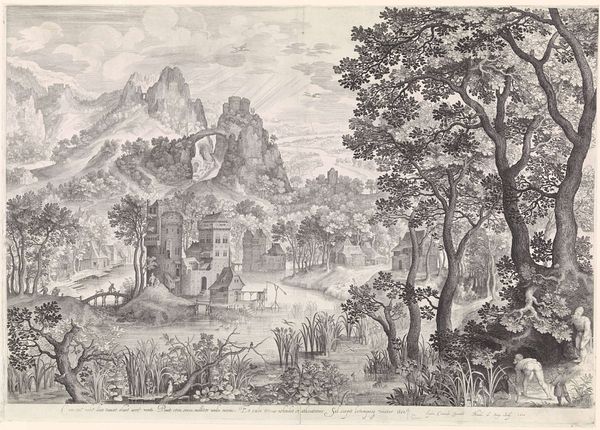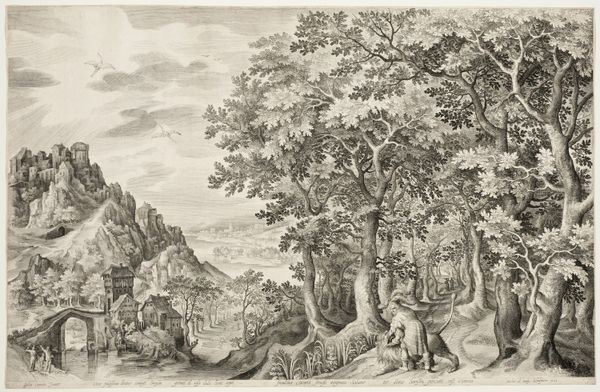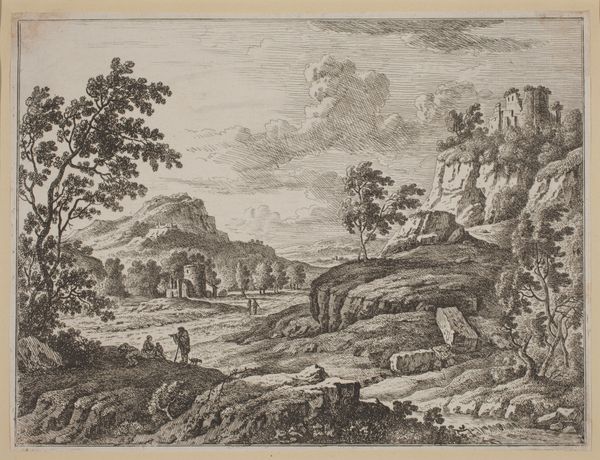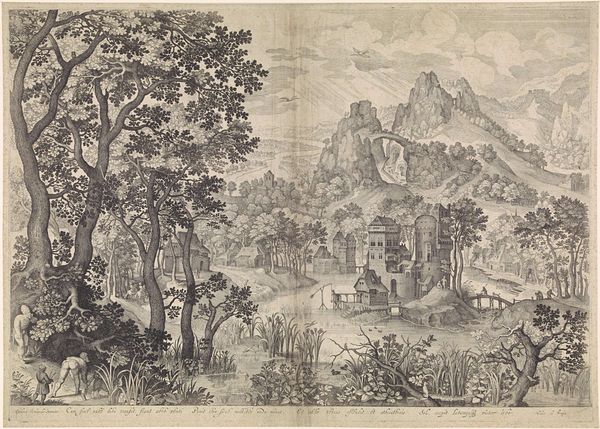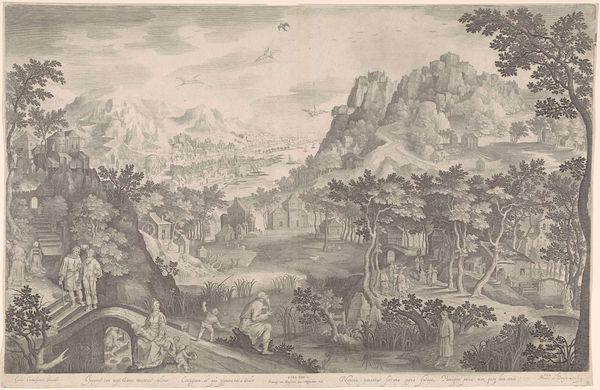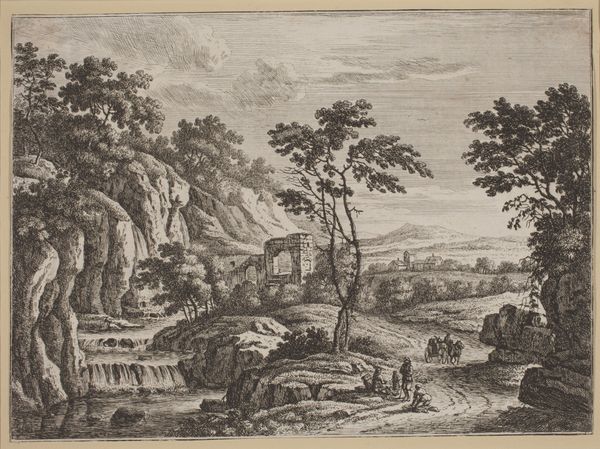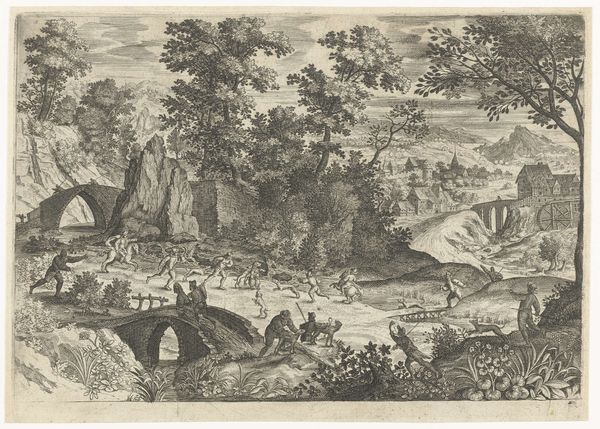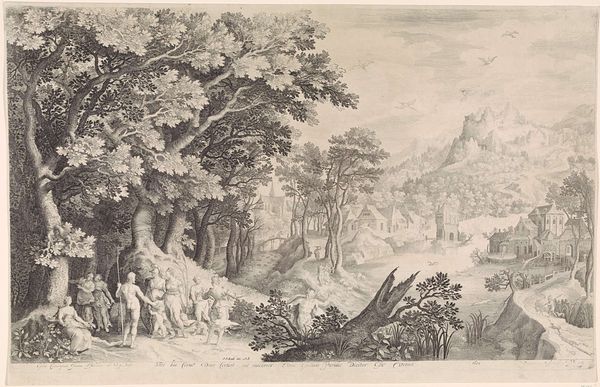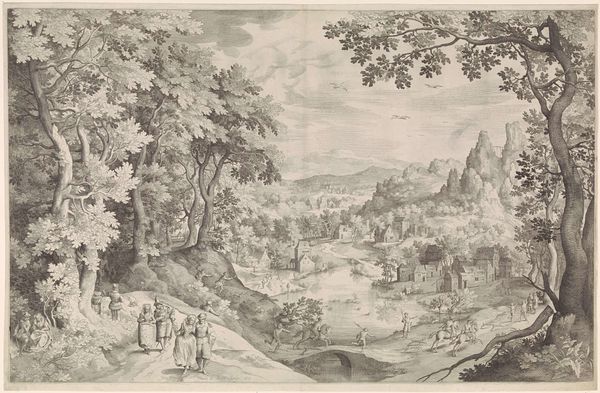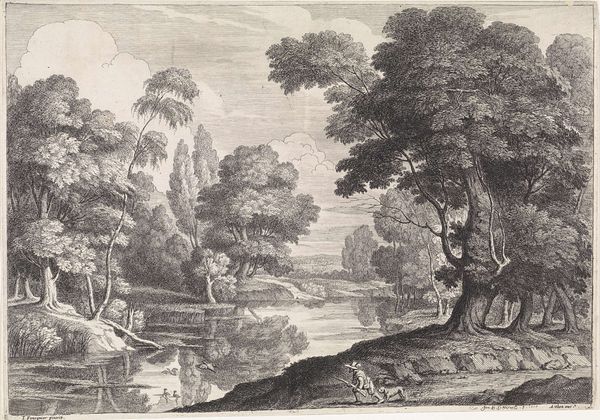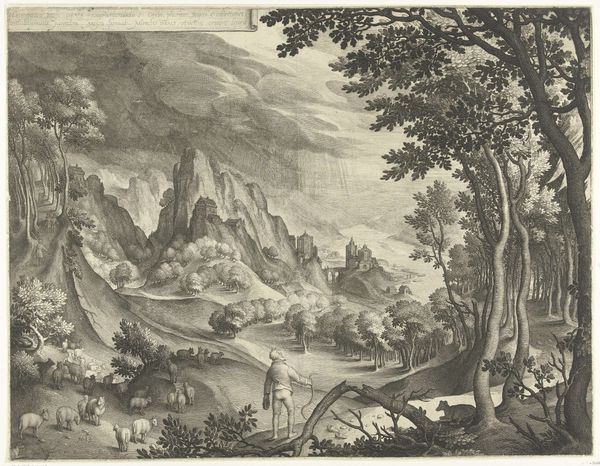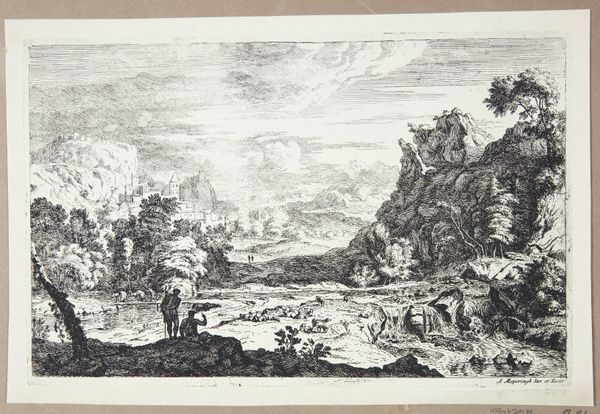
drawing, print, etching
#
drawing
#
narrative-art
#
pen drawing
# print
#
etching
#
landscape
#
northern-renaissance
Dimensions: width 583 mm, height 461 mm
Copyright: Rijks Museum: Open Domain
Curator: Here we have Nicolaes de Bruyn's "Elisa vervloekt vervelende kinderen," an etching dating back to 1602, currently housed in the Rijksmuseum. Editor: It’s...intense. The landscape initially draws you in with its almost idyllic charm, but then your eye catches the figures and there is something menacing happening. The level of detail in the natural elements, from the trees to the water, is extraordinary, especially considering it's a print. Curator: The artwork depicts a biblical scene, specifically the story of the prophet Elisha cursing the children who mocked him. That’s what you’re sensing in the foreground. Its existence as a print underscores the intent to disseminate this moral lesson broadly throughout society. Editor: It makes me think about power dynamics, doesn't it? Here’s a figure of authority using his influence to enact violence against those considered to be misbehaving children. Is de Bruyn illustrating a cautionary tale, or subtly critiquing the use of religious power? What were the politics around parent-child relationships during the late Renaissance? Curator: It's probable the print was more reflective of prevailing attitudes toward discipline and respect for authority in that era, promoting those social structures.. The landscape functions as more than mere backdrop; it signifies the natural order, in which such events were perceived as part. I see an effort to make theological concepts and moral arguments legible through imagery for a broader populace, aligning personal belief with civic expectations. Editor: I find myself drawn to the faces of the children—they're almost animalistic, adding a layer of otherness to the narrative. It provokes discussion around what defines "civilized" behavior. How did race, gender, and class intersect to influence the judgment against such people who were considered different at the time? Are they just misbehaving kids, or were other oppressive social structures involved? Curator: Those considerations highlight how prints like this served as visual instruments for disseminating and solidifying specific social norms. In museums today, art can act as a stimulus for conversation, offering viewers chances to examine and consider previously unquestioned standards and systems. Editor: Looking at "Elisa vervloekt vervelende kinderen," makes me think of the ongoing dialogue between religion, power, and morality. It encourages reflection on which histories, which forms of truth, and who's voices are often marginalized, even now. Curator: Precisely. Hopefully it gives us more to ponder moving forward.
Comments
No comments
Be the first to comment and join the conversation on the ultimate creative platform.
